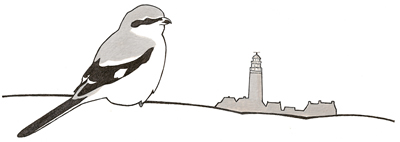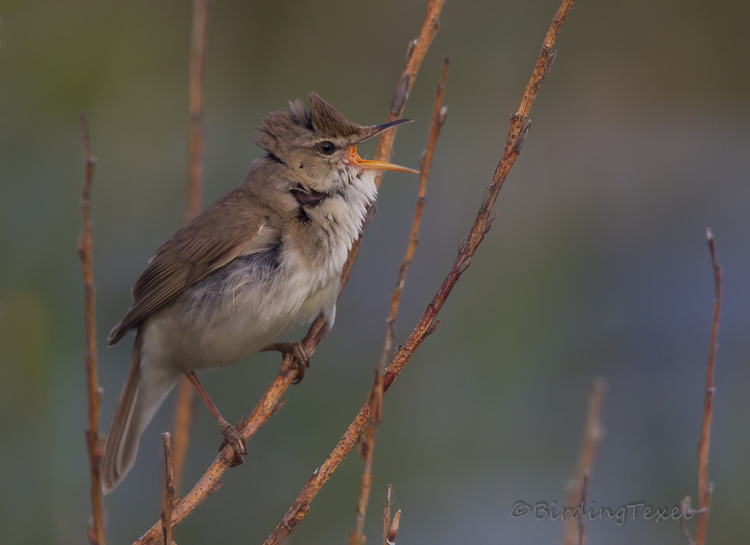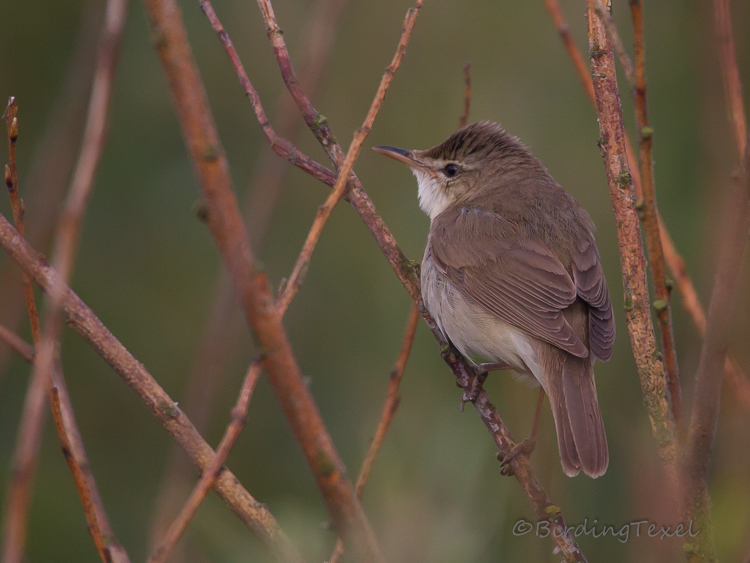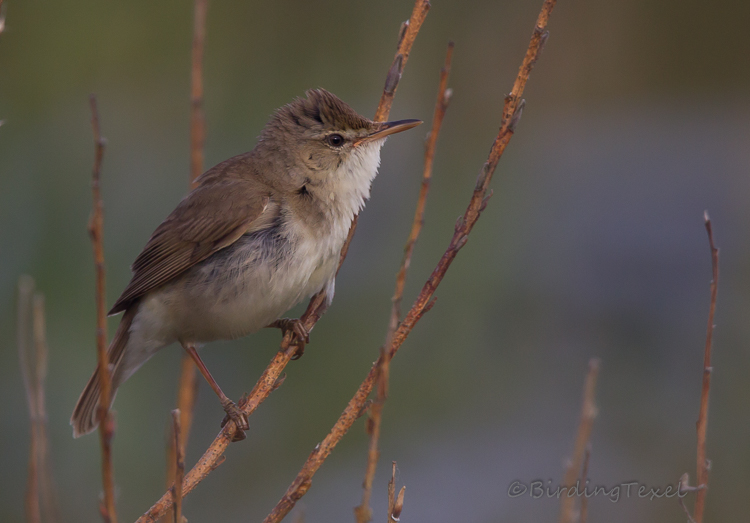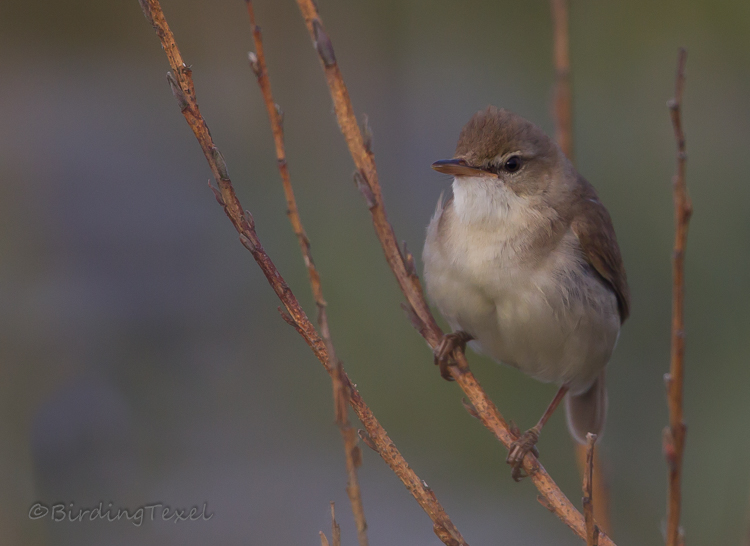In the evening of the sixth of June, he let hear himself very short. In the early morning of the next day, there was no doubt, and I could report that a Blyth's Reed Warbler Acrocephalus dumetorum was singing on camping De Robbenjager. And how! A slow far-carrying song with pure scale exercises, clicking sounds and flawless imitations of Rosefinch, Common Whitethroat and Eurasian Curlew. The song is a very distinctive feature and makes the identification of these vagrant not difficult. Without singing the identification is difficult because of the similarity with European Reed Warbler and Marsh Warbler. Some field characteristics; short primary projection, creamy buff supercilium in front of the eye, long bill, pretty dark legs and 'cold' gray brown upperparts.
Blyth’s Reed Warbler breeds roughly from Finland to Central and South Asia. The Indian subcontinent is its wintering area.
Struikrietzanger / Blyth's Reed Warbler Acrocephalus dumetorum, De Robbenjager, Texel, 07-06-2016 (recording Arend Wassink)
Struikrietzanger / Blyth's Reed Warbler Acrocephalus dumetorum, De Robbenjager, Texel, 08-06-2016



